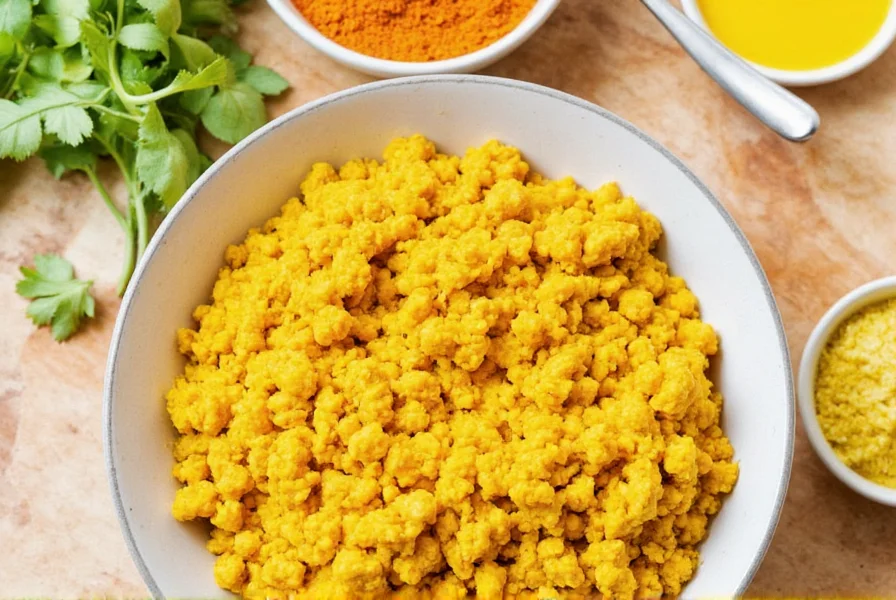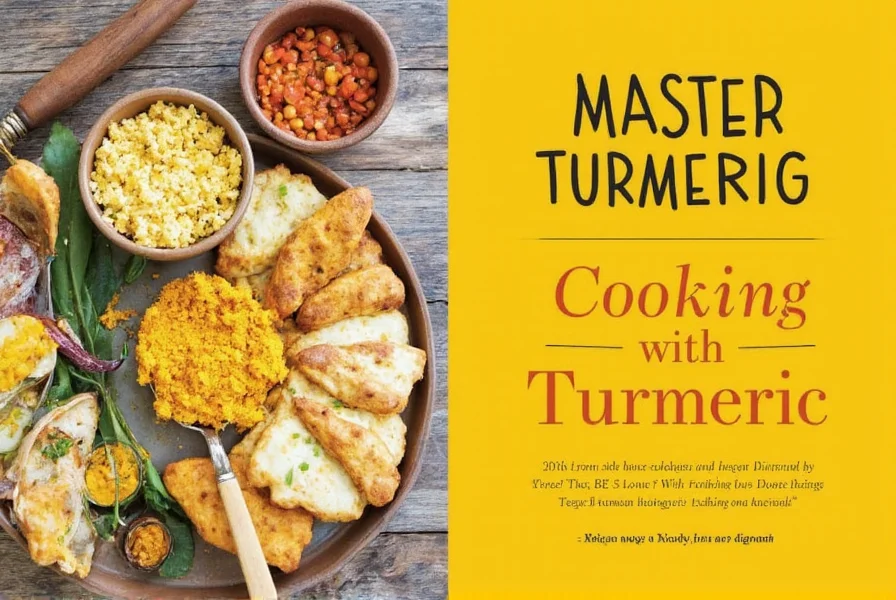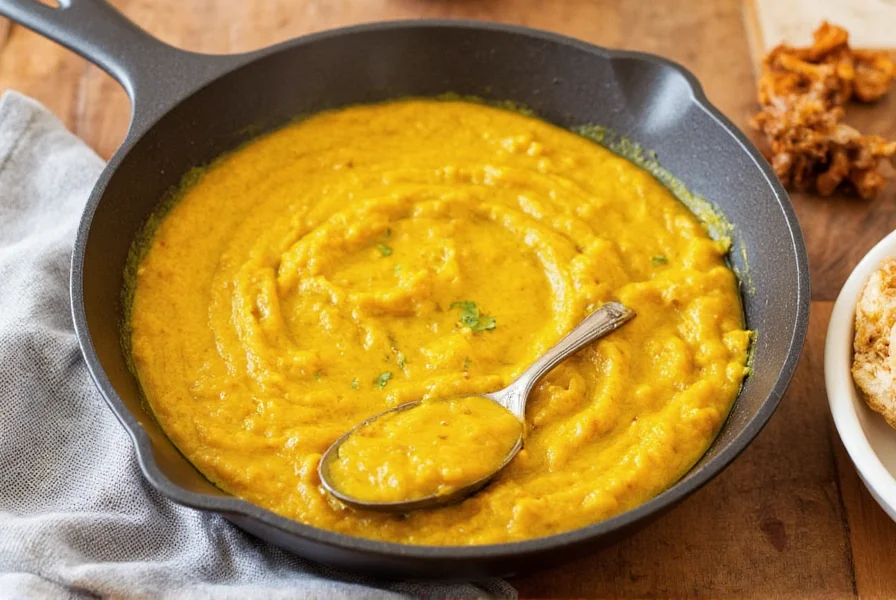When cooking with turmeric spice, timing and technique make all the difference. This ancient spice, central to cuisines across South Asia, the Middle East, and beyond, contains curcumin—the compound responsible for both its brilliant color and potential health properties. However, curcumin is fat-soluble and poorly absorbed on its own, which is why traditional recipes often combine turmeric with oil and black pepper. Understanding these culinary principles elevates your dishes from merely yellowed to genuinely flavorful.
The Science Behind Turmeric in Cooking
Turmeric's active compound, curcumin, begins to degrade at temperatures above 300°F (149°C), which explains why many traditional preparations call for adding turmeric early in the cooking process at lower temperatures. When cooking with fresh turmeric root, the enzymatic compounds create a more complex flavor profile compared to ground spice, with citrus and ginger notes that mellow during cooking.
Professional chefs recommend blooming ground turmeric in oil for 30-60 seconds before adding other ingredients. This technique, common in Indian tadka or Middle Eastern tempering, releases fat-soluble compounds and reduces raw, bitter notes. The addition of a pinch of black pepper increases curcumin bioavailability by up to 2,000%—a traditional practice now validated by modern science.
Flavor Pairing Principles for Turmeric
Certain ingredients naturally complement turmeric's earthy, slightly bitter profile. Understanding these relationships helps create balanced dishes without overwhelming the palate.
| Ingredient Category | Best Pairings with Turmeric | Why It Works |
|---|---|---|
| Fats & Oils | Coconut oil, ghee, avocado oil | Enhances curcumin absorption and mellows bitterness |
| Acids | Lime juice, tamarind, vinegar | Counteracts bitterness while preserving vibrant color |
| Spices | Black pepper, cumin, coriander | Creates complex flavor layers and boosts bioavailability |
| Vegetables | Root vegetables, cauliflower, spinach | Absorbs flavor well and complements earthy notes |
Practical Applications Across Cooking Methods
Different cooking techniques require specific approaches when using turmeric in recipes. Here's how to maximize flavor in various preparations:
Dry-Heat Methods (Roasting, Grilling)
When roasting vegetables with turmeric, toss them with oil first, then add turmeric just before cooking. High dry heat can make turmeric bitter if applied too early. For grilled meats, create a paste with turmeric, oil, and acid (like lemon juice) and apply 30 minutes before cooking—any longer may cause surface bitterness.
Wet-Heat Methods (Simmering, Steaming)
For curries, soups, and stews, bloom turmeric in oil with other whole spices before adding liquids. This extracts maximum flavor and prevents the 'raw' turmeric taste. When making golden milk or turmeric tea, simmer for 10-15 minutes to fully extract compounds, but avoid boiling vigorously which degrades curcumin.
Raw Applications (Salads, Dressings)
Fresh turmeric shines in raw preparations. Grate small amounts into salad dressings or vegetable slaws. The enzyme myrosinase in raw cruciferous vegetables like cabbage actually enhances turmeric's beneficial compounds. For vibrant color without bitterness, use half the amount of fresh turmeric compared to ground in raw applications.

Avoiding Common Turmeric Mistakes
Even experienced cooks make these errors when cooking with turmeric spice:
- Overheating: Adding turmeric to already smoking oil creates bitterness. Heat oil to medium, then add turmeric.
- Incorrect measurements: Ground turmeric is more concentrated than fresh—use 1 teaspoon ground for every 1-inch fresh piece.
- Ignoring staining potential: Turmeric stains plastic and fabrics permanently. Use glass containers and stainless steel utensils.
- Skipping the fat component: Turmeric without fat results in poor flavor extraction and reduced bioavailability.
- Adding too late in cooking: For complex flavor development, add early in wet-heat methods.
Signature Dishes Featuring Turmeric
While turmeric appears in countless global cuisines, these preparations showcase its versatility:
- Indian Haldi Doodh (Golden Milk): Simmered with milk, black pepper, and ghee for maximum absorption
- Sri Lankan Kaha Bath: Turmeric-infused rice with caramelized onions and spices
- Moroccan Turmeric Chicken: Marinated with lemon, garlic, and turmeric then slow-cooked
- Indonesian Kunyit Upih: Steamed rice cakes colored and flavored with fresh turmeric
- Modern Turmeric Hummus: Blended with chickpeas, tahini, and a touch of maple syrup
Storage and Handling Best Practices
Proper storage maintains turmeric's potency. Keep ground turmeric in an airtight container away from light and heat—it retains flavor for 6-12 months. Fresh turmeric root lasts 2-3 weeks refrigerated in a paper bag, or freeze for up to 6 months. Never store turmeric in clear containers as light degrades curcumin rapidly.
When handling fresh turmeric, wear gloves to prevent staining, and clean surfaces immediately with a baking soda paste if spills occur. For persistent stains on cutting boards, rub with lemon juice and salt. Remember that turmeric's staining power comes from the same compounds that provide its color and potential benefits—so embrace the golden hue as a sign of quality!

Modern Culinary Innovations with Turmeric
Chefs are expanding beyond traditional applications when using turmeric in recipes. Contemporary techniques include:
- Turmeric oil infusions: Cold-infused oils for finishing dishes without cooking
- Sweet applications: Paired with honey and citrus in baked goods and desserts
- Dehydrated turmeric powder: For precise seasoning without moisture
- Layered flavor profiles: Combining fresh and ground turmeric in the same dish
- Temperature-controlled cooking: Using sous vide to maximize curcumin extraction
These innovations demonstrate turmeric's versatility beyond curry powders and rice dishes. When experimenting, start with small amounts—turmeric's flavor intensifies during cooking and can dominate if overused.
Frequently Asked Questions
Does cooking destroy turmeric's health benefits?
Cooking actually enhances turmeric's bioavailability when done properly. Simmering turmeric in liquid with fat (like coconut milk) for 10-15 minutes increases curcumin solubility. However, prolonged high-heat cooking above 300°F degrades curcumin, so moderate heat and proper timing preserve maximum benefits.
How can I prevent turmeric from staining my kitchen surfaces?
Use stainless steel or glass surfaces when handling turmeric. Immediately clean spills with a paste of baking soda and water. For persistent stains, apply lemon juice and let sit for 5 minutes before scrubbing. Always wear gloves when handling fresh turmeric root, and avoid plastic containers which absorb the color permanently.
What's the difference between fresh turmeric and ground turmeric in recipes?
Fresh turmeric has a brighter, more complex flavor with citrus and ginger notes, while ground turmeric offers a more earthy, concentrated flavor. Use 1 inch of fresh turmeric root as equivalent to 1 teaspoon of ground. Fresh works better in raw applications and quick-cooking dishes, while ground is ideal for long-simmered recipes where flavor development is needed.
Why do recipes often include black pepper with turmeric?
Black pepper contains piperine, which increases curcumin absorption by up to 2,000%. This isn't just traditional wisdom—scientific studies confirm this synergy. Always include a pinch of black pepper (about 1/8 teaspoon per teaspoon of turmeric) when cooking with turmeric to maximize both flavor complexity and potential benefits.
Can I substitute turmeric in recipes if I don't have it?
While no perfect substitute exists, you can approximate turmeric's color with saffron (use 1/4 teaspoon saffron for 1 teaspoon turmeric) or annatto. For flavor, a mix of ginger and mustard powder (1/2 teaspoon each per teaspoon of turmeric) provides some earthiness. Remember that substitutes won't provide the same color or complete flavor profile, so adjust expectations accordingly.











 浙公网安备
33010002000092号
浙公网安备
33010002000092号 浙B2-20120091-4
浙B2-20120091-4